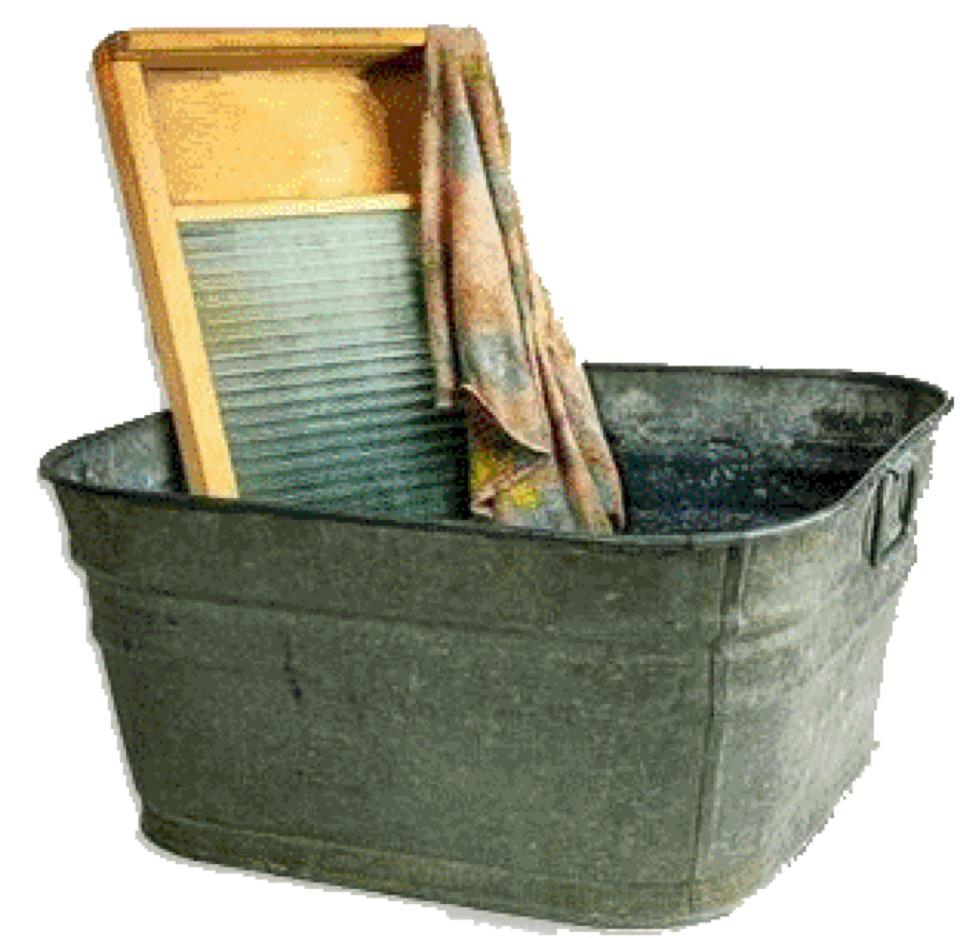Stewartb
Final Approach
They don’t use water pressure to wash clothes. All it does is meters water into the drum.
They don’t use water pressure to wash clothes. All it does is meters water into the drum.
I made it out the garage and found that my pressure tank is a Q82V. 80 gallons and 75psi. http://www.watertanks.com/products/GP_TANK___0495-010
A plumber can tell you more, but it seems if you have a self regulating water source at that pressure you'd have few issues.
i'll let the engineers on this thread keep arguing, but i'm the MBA so here's my way to solve it...They said the "main" is a 3" line at the street.
Our washers have been fine until this new one. We're definitely catering to its needs here. The old washer didn't have this issue, but it also died.
@tspear good points. I'll do some diagnostics this weekend...
i'll let the engineers on this thread keep arguing, but i'm the MBA so here's my way to solve it...
a new washer is infinitely less expensive (likely) than all the stuff you're contemplating. Since the only adverse affect you have is that one washing machine doesn't work, instead of upgrading the infrastructure, just get a less finicky machine...
Happy wife, happy life!Agree with those points 100%. But keep in mind, my wife likes this new washing machine.
I'm sure we could return the washer/dryer to Menard's and get our money back and get something different. And maybe we should. On the other hand, the water flow in this house has been a complaint since we moved in. So, if we are able to do something that improves that situation, then that's not a bad thing, either. I also really don't feel like getting that washer/dryer back down the stairs and get new ones back up the stairs. Electrolux is sending a tech out next week but I'm sure they'll say it's our house's fault.
 A solar dryer will also work well and save money. Don't forget the ironing board.
A solar dryer will also work well and save money. Don't forget the ironing board.And you were doing so well saving him money now ya turn around and spend it. MBAs!Happy wife, happy life!
OK, adding in the issue that you generally are not very happy with the water pressure, I would look VERY hard at just solving the problem through a trenchless water line upgrade (maybe go 1.5" poly or if you have the money, PEX), OR do your tank solution, but the bigger water line (even if you leave your 3/4" meter in place) would probably solve all of your issues. there are trenchless pullers that can do it with a lot less disruption, it might be worth getting an eyeball price on it to permanently address it. also, then if you add irrigation, or a workshop with showers/etc you've solved the whole problem
Offering Ted a solution:
If you can find one, buy your wife an old agitator/wringer washer from the fifties and tell he to get used to it.A solar dryer will also work well and save money. Don't forget the ironing board.

Offering Ted a solution:
If you can find one, buy your wife an old agitator/wringer washer from the fifties and tell he to get used to it.A solar dryer will also work well and save money. Don't forget the ironing board.

it's kind of a superpowerAnd you were doing so well saving him money now ya turn around and spend it. MBAs!
Identify the problem before spending money.
It's not if ya do it yourself. Digging it up is the hard part of course. But plastic pipe isn't that expensive. Some contact cement and couples. I did my in-laws (just a subdivision lot) for I think less than $50, back in the late 80s I think. Theirs was easy to find, front yard was saturated, and mom-in-law was by herself and plumbers wanted 6-800 bucks. Told her don't do it, I'll be right over.
Thinking about a Ditch Witch
Sounds like a thread title.
As opposed to a Bench Wench?Thinking about a Ditch Witch
Sounds like a thread title.
It sounds like the washer is the problem.
Agree with those points 100%. But keep in mind, my wife likes this new washing machine.
Offering Ted a solution:
If you can find one, buy your wife an old agitator/wringer washer from the fifties and tell he to get used to it.A solar dryer will also work well and save money. Don't forget the ironing board.
We had a new Samsung washer that worked for several months, then gave a "low water pressure" warning. I measured 40 PSI at the street, but had no indication it had changed lately. Samsung service ordered a new motherboard, arrival in ~3 weeks time.You know, it is a new washer and it's sensor may just be pooched. Something to think about.
Ps also, since new washers and dryers have delicate electronic components, I run them on an APC surge suppressor to give them a fighting chance
Sent from my iPhone using Tapatalk
Whole house surge suppression is the way to go...Ps also, since new washers and dryers have delicate electronic components, I run them on an APC surge suppressor to give them a fighting chance
Sent from my iPhone using Tapatalk
Very trueThat's called "crappy electronics design" not components that are delicate. Because the components that can handle anything thrown at them in a typical residential electrical system are literally pennies more expensive than those that can't. It's not cost savings, it's just engineering cluelessness. An MOV can handle most of what life throws at a washing machine. That's all that's inside the APC. Maybe a gas discharge tube for lightning strikes nearby. Two bucks worth of parts maximum, that should already be in the washer.
yes, but "should" and "is" are different words.That's called "crappy electronics design" not components that are delicate. Because the components that can handle anything thrown at them in a typical residential electrical system are literally pennies more expensive than those that can't. It's not cost savings, it's just engineering cluelessness. An MOV can handle most of what life throws at a washing machine. That's all that's inside the APC. Maybe a gas discharge tube for lightning strikes nearby. Two bucks worth of parts maximum, that should already be in the washer.
APC - All Protection Compromised. They used to be good, but have developed a poor reputation over the last few years.Ps also, since new washers and dryers have delicate electronic components, I run them on an APC surge suppressor to give them a fighting chance
Sent from my iPhone using Tapatalk
this.Whole house surge suppression is the way to go...
APC - All Protection Compromised. They used to be good, but have developed a poor reputation over the last few years.
this.

Happy wife, happy life!
OK, adding in the issue that you generally are not very happy with the water pressure, I would look VERY hard at just solving the problem through a trenchless water line upgrade (maybe go 1.5" poly or if you have the money, PEX), OR do your tank solution, but the bigger water line (even if you leave your 3/4" meter in place) would probably solve all of your issues. there are trenchless pullers that can do it with a lot less disruption, it might be worth getting an eyeball price on it to permanently address it.
.... There's no need to do the investigations and calculations recommended by previous posters.
.
Check your findings against a pressure drop graph or online calculator.
.
.
http://www.engineeringtoolbox.com/pressure-loss-copper-pipes-d_930.html
Your findings will verify that the problem is pressure drop due to distance. With the graph or online calculator you will be able to pinpoint the pressure drop at the flow rate measured with your five gallon bucket.
I'd say it isn't obvious at all. The chart you linked doesn't support your conclusion either.It's quite simple. Quite a few of the suggestions had no relationship to the problem. It's obvious the issue is caused by pressure drop due to the length of the supply lateral to the house.
